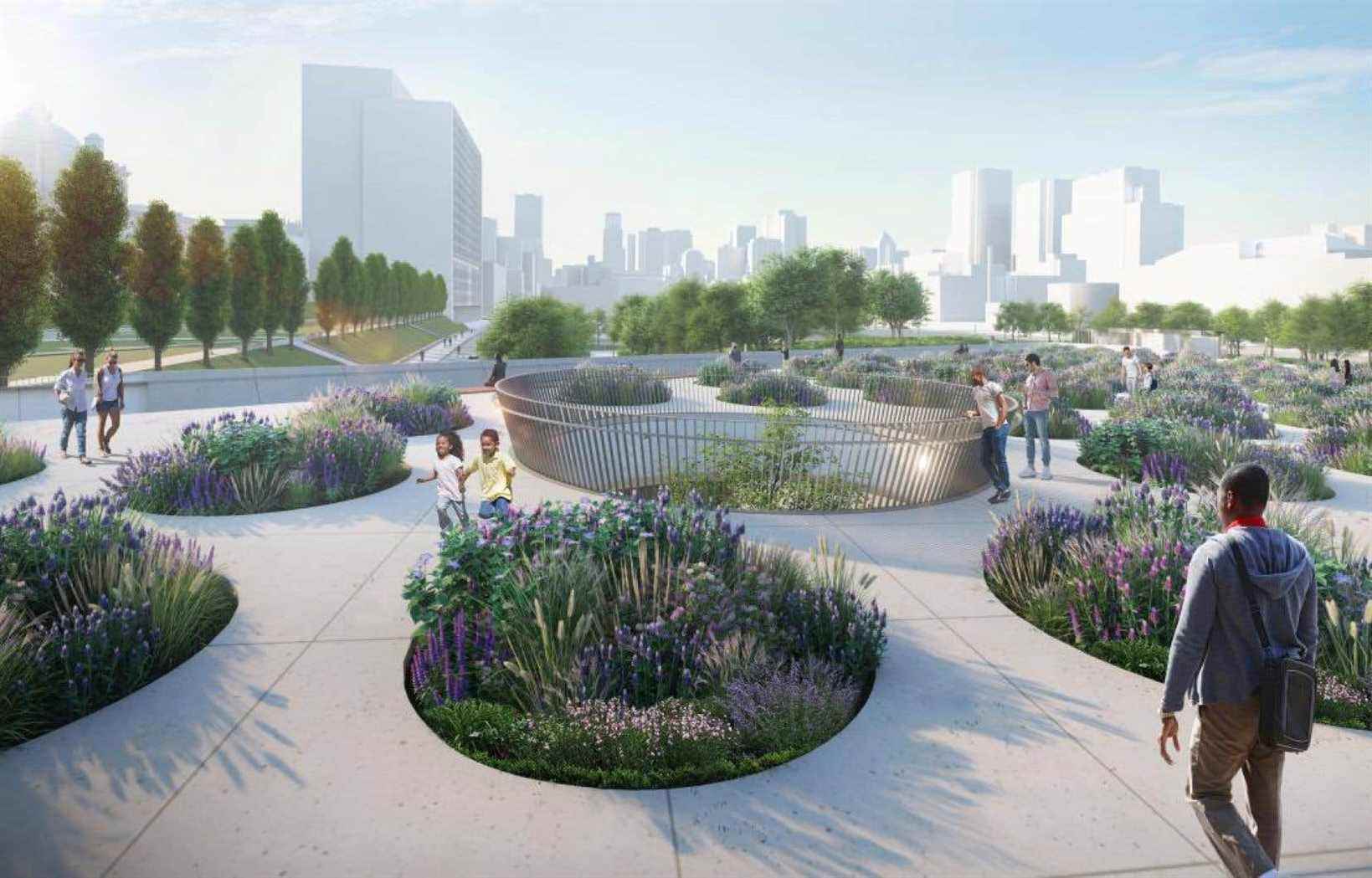Two years late, work on Place des Montréalaises will begin in the coming days. But the bill for the project has risen again and will reach nearly 100 million dollars, due in particular to the obligation for the City of Montreal to buy several lots from the Ministère des Transports du Québec (MTQ), which had not been planned in the initial plans.
Legacy for the 375and Montreal’s anniversary in 2017, the covering of a 125-meter segment of the Ville-Marie highway had cost the Quebec government $68 million. The City then planned to develop this new public space, called Place des Montréalaises. In 2018, it estimated the project costs at 62.4 million. Two years later, the bill had risen to 81 million due to changes made to the project, including the addition of work to dismantle the pedestrian tunnel.
Last Monday, the city council approved a new budget increase that will bring the total bill for the project to $98.8 million.
Land purchases
The City explains that this increase is partly attributable to its purchase of land located near the Ville-Marie highway exit ramp at a cost of $6.4 million. Initially, the MTQ was to remain the owner of these lands and grant construction rights to the City of Montreal. The legal services of the MTQ and the City finally agreed that this model was not ideal. “By mutual agreement, a strategy was found,” explains the head of urban planning on the executive committee, Robert Beaudry. “For the City, making investments on land that does not belong to it is not a great idea. For the MTQ, if a problem arises on one of their sites, it is not pleasant either. It was therefore agreed to do the opposite: the land will be sold to the City and there will be an MTQ servitude. »
Other elements have increased the bill. In particular, the City has integrated into the project the development of the right-of-way of Hôtel-de-Ville Avenue, which will increase the area of Place des Montréalaises. The postponement of work, the pandemic and the recent increase in construction market prices have also pushed up costs. As for the demolition of the pedestrian tunnel, it will have no impact on the expenses assumed by the City, specifies Robert Beaudry. “It was supposed to be done by another administrative unit. It is a communicating vessel. On the City’s budget, it has no impact, but it is within the scope of the project,” he explains.
Robert Beaudry does not expect any further cost increases. “The more a file advances, the more the budget is refined”, he underlines.
Tribute to the builders
Designed according to plans by Lemay, Angela Silver and SNC-Lavalin, the firms that won the international landscape architecture competition, Place des Montréalaises will pay tribute to the 14 victims of the Polytechnique massacre as well as to the women builders of Montréal among including Jeanne Mance, co-founder of Montreal, Marie-Josèphe-Angélique, a black slave who was accused of having caused the fire in Montreal in 1734, Myra Cree, an Aboriginal of Mohawk origin, and the feminist Idola Saint-Jean.
This esplanade will also make it possible to recreate a link between the area around the Champ-de-Mars metro station and the town hall, while repairing the scar created in the early 1970s by the construction of the Ville-Marie expressway. The new esplanade will include a flowery meadow, a mirror work in homage to 21 Montrealers and a pedestrian walkway that will replace the old underpass.
Work on this new public space is expected to be completed by the end of 2024.
A public market
Member of the Association of Residents of Old Montreal, Fiona Ham is enthusiastic about the project. However, she would like the City to provide for the establishment of a market open 24 hours a day, seven days a week during the summer, similar to the one located near the Mont-Royal metro station. “Given the presence of the CHUM next door, I think it would be important to have a 24/7 market, especially since in the eastern part of Old Montreal, it is sometimes difficult to have access to fruit and vegetables. I raise this question every time we have meetings with the City,” she notes.
The issue of homelessness is also of concern to area residents. A team of social workers is already deployed in the area of the future Place des Montréalaises and Square Viger, but the association wants the City to pay particular attention to the issues of cohabitation and maintain the services offered to this itinerant population, underlines Fiona Ham.
